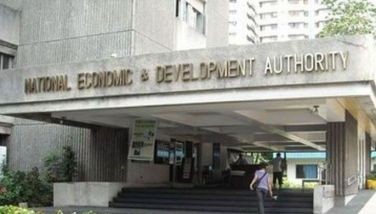Cambodia's wealth
No doubt, Angkor Wat in Siem Reap, Cambodia is a must see for many reasons. With the simplest of technology yet with the combination of brilliant minds, artists, laborers, and more, the grand structures, the beautiful temples at Angkor Wat serve as a testimony about the infinite possibilities that human beings can construct, guided by their worship and adoration for their gods and/or their god-leaders.
Angkor Wat is simply not merely the grand temples that one is encouraged to scale, despite stone steps replaced by temporary wooden stairs. When one reaches the top, one is presented the panoramic scenery of nature and communities that surround and that made the temples sustainable. One temple, called the castle in the sky, provides the climber with the refreshing blow of fresh air, so needed after the hard climb through more than 20 steep steps towards the top.
The temples were intended for the gods and for the leaders as well. Protected by a lake that served as the moat, fish and frogs from the lake also provided the people and the leaders their much needed food on a sustainable basis. The lake now is also a happy pool for the kids who jump in to have fun and refresh themselves from the very hot sun after hard hours of peddling different types of items to visiting tourists.
Angkor Wat is also surrounded by rich rice fields with fruit and other trees interspersed throughout the fields. Tall, proud trees also remain, a good reminder of the rich forest that served and continue to serve as home for animals, insects, birds and other creatures, which in turn, provided additional food, other nourishment, and shelter to the dwellers within and outside of Angkor Wat then.
Going to Angkor Wat from the capital city of Phnom Penh and going back from Angkor Wat to Phnom Penh, one is allowed a deeper view of the real wealth of Cambodia: its people and resources.
The Cambodian people exude gentleness of manner- ever respectful to both locals and foreigners. They appear innately respectful and soft-spoken. As we wrote in an earlier article about Kampuchea, we have yet to experience drivers shouting in anger at each other in the terrible traffic jams in the city or in the countryside. Very few also use their car horns to insist on their right to the road.
Each district and province boasts of rich rice fields, and "we are proud to say, all natural rice, no fertilizer or chemicals added," our wonderful guide, Prof. Ratana of the University of Cambodia told us. One can see the beautiful green, natural rice fields stretch far beyond the eyes can see. The pool of water collected in the fields provide the farming communities with their fish, frogs and other protein sources. The fruit and other trees and plants interspersed within the rice fields allow for additional food and necessities for the farming communities.
Certain communities had delicious fruits and sticky rice delicacies to offer to travelers. One community , famous for jars and wooden carved items, was frequently visited by those fascinated by the beautiful community products. Each community had its vast expanse of naturally-grown rice, fruits, and other items- one gets the impression that nothing beats food security as a priority policy that all governments need to pursue all throughout the world, a lesson our country has to revive as we used to be proudly a rice-exporting nation in our historical past.
Cambodia's wealth attracted so many foreign invaders that they have either successfully or not successfully been able to resist. Despite the various periods of war and conquest and civil strife, present Cambodia is a picture of a robust, proud yet gentle people and society. Not yet perfect, of course, like many other countries globally. Like the Philippines, the inequality is observable, in the types of housing, the type of ladder that characterize many rural Cambodian homes and other indicators.
Almost every Cambodian home, however, had huge jars to catch the rain and cattle ( occasional carabaos) as their helpers for their farms. With rice, fruits, fish and frogs from the fields, for now, one gets the happy impression that the Cambodians have found their wealth and their sustainable strength among their people and their communities.
Our rural Philippines used to be like present Cambodian rural society. Sadly, our organic farmers need to be encouraged to return to natural farming as the surest way to sustainable life. Never too late to start anew. There is always hope and there is always a new tomorrow.
- Latest




























